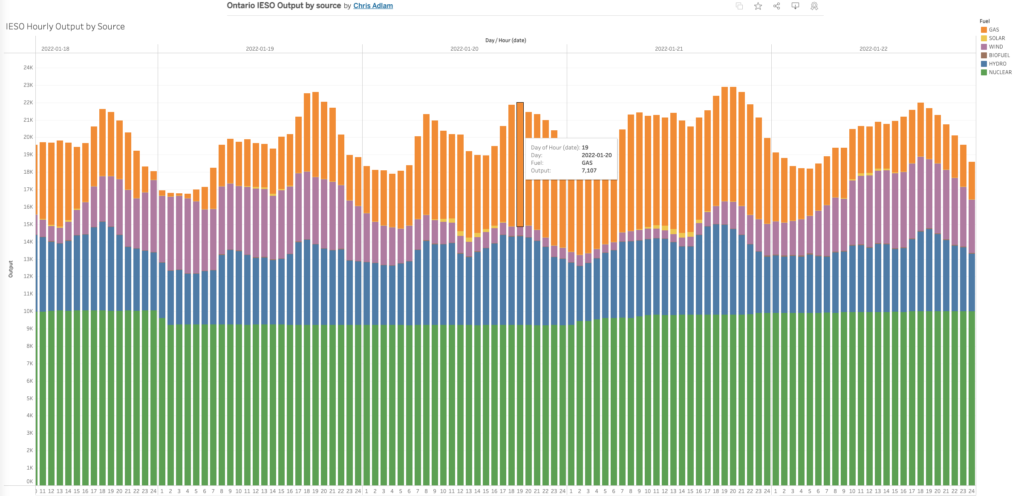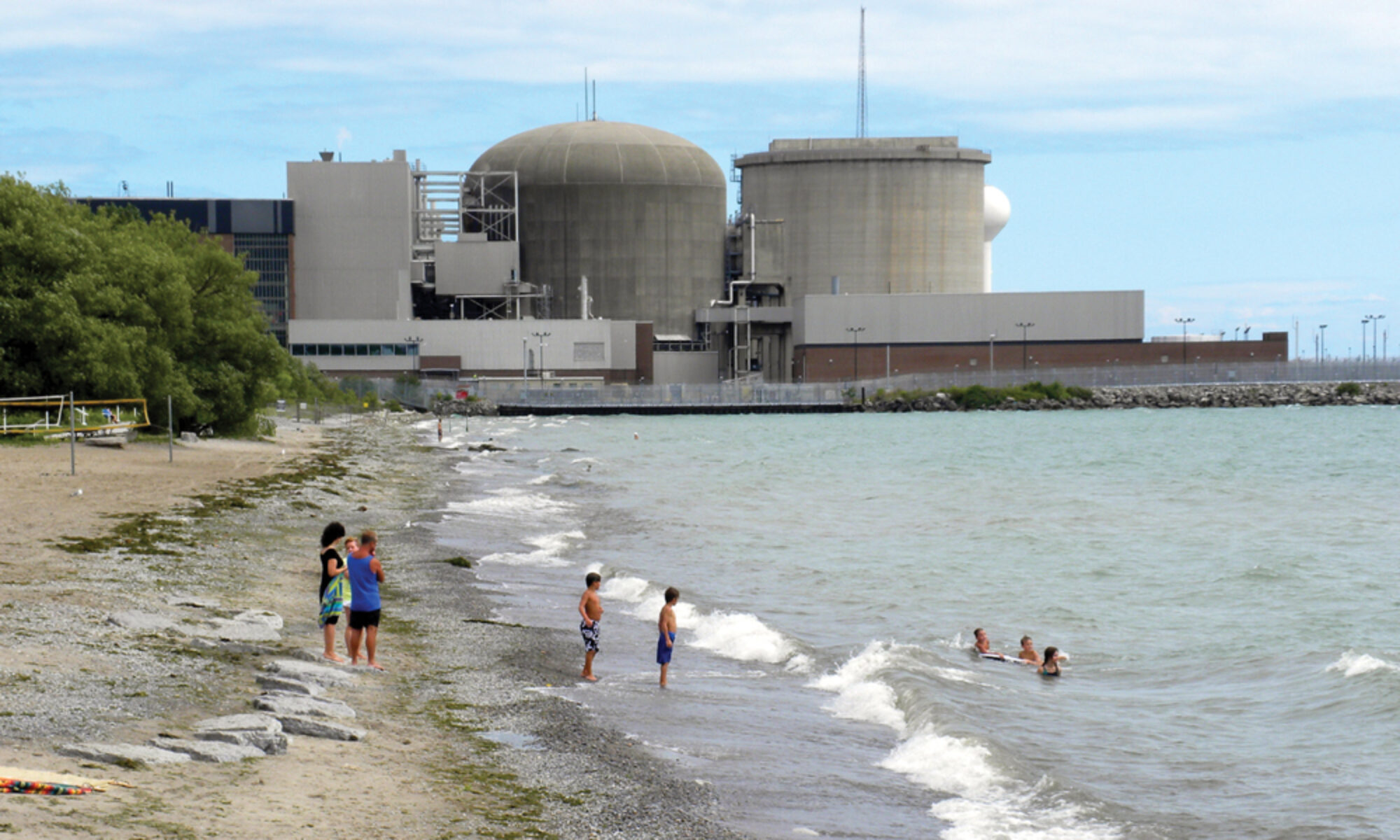We experienced an extremely cold January this year with numerous periods where the temperature was below -20C. At one point, it was -32C here locally. Quebec demand exceeded supply for a number of these events and they were importing power from Ontario, power we had an abundance of thanks to nuclear, hydro and gas capacity, as wind was nowhere to be found.
If we go back to Wednesday the 12th of January, wind collapsed for ~36 hours, 848MW and dropping at 4PM, not recovering until 4AM Friday. This was also when Quebec demand exceeded supply. Gas was ~5,600MW; so over 8GW without Pickering.
Early on the 20th, wind collapsed again, but gas demand was even higher, crossing 7,000MW and not dropping below 5,000MW until the 22nd. 43 hours. Without Pickering that would have been 9,700MW; >8,600MW for the duration; 370GWh.

The Ontario Clean Air Alliance has made several claims lately that are not based in reality:
- Pickering can be replaced by Quebec imports and conservation
- Gas can be replaced by Quebec imports and conservation
- V2G battery technology can be used to replace gas peaking capacity
During extreme hot and cold events, shutting off air conditioning or heating (conservation) could be fatal for the elderly and other vulnerable members of our society. These events are not experienced in a vacuum, Quebec and Ontario were both hit with the same cold snap and Quebec was pushed beyond their supply capability, even pleading for residents to turn down their heat to try and curb demand.
60% of Ontario’s heat is provided by natural gas; the vast majority by fossil fuels including propane and oil. We are being encouraged to electrify heating and transport, both of these things will increase demand beyond where it is presently. In the above scenario, Ontario had no alternative but to burn gas, as that was the only reliable source available beyond nuclear and hydro. Conservation was not an option and you can’t import what isn’t there, made more obvious by the fact we were already exporting to that same party.
This brings us to the storage claim. Jack Gibbons has stated that 1 million electric F-150’s could provide double the capacity of Ontario’s existing gas generation assets.
- The F-150 Lightning, in the highest trims, has the ability provide 9.6kW of electricity, ergo, 1 million of these would be 9,600MW. Ontario has 10,515MW of gas capacity.
- The F-150 Lightning, with the extended range battery, has a capacity of 131kWh.
- That is 13hrs of electricity at full load, fully draining all 1 million trucks, assuming they were all fully charged at the onset and all remained connected for the duration.
- Simplifying this further, this is 131GWh of available capacity. Between the 20th and 22nd Ontario would have needed 370GWh to replace gas + Pickering, but both gas usage and Pickering output didn’t stop after the 22nd just because the wind picked back up.
Ontario will need more clean, reliable power in the future as we increase electrification. We clearly can’t rely on Quebec, nor should we, they do not expect us to. During the summer, the relationship is such that Ontario is a net importer, during the winter, we are a net exporter. This works for both provinces. Hydro is mostly tapped-out in Ontario with very little development potential. Wind doesn’t work during periods of high demand, and weeks-long storage has no economic case with batteries. Pumped hydro storage is widely unpopular, with even the small single Meaford project facing widespread opposition. This brings us back to nuclear and why it is absolutely idiotic for us to be shuttering a plant with 40+ more years left in it and replacing it with gas generation. With the world in the state that it is and the consensus that we must reduce emissions, Ontario already did! We phased-out coal, using nuclear. Prematurely retiring 1/4 of that capacity is criminal and why we must Save Pickering.
